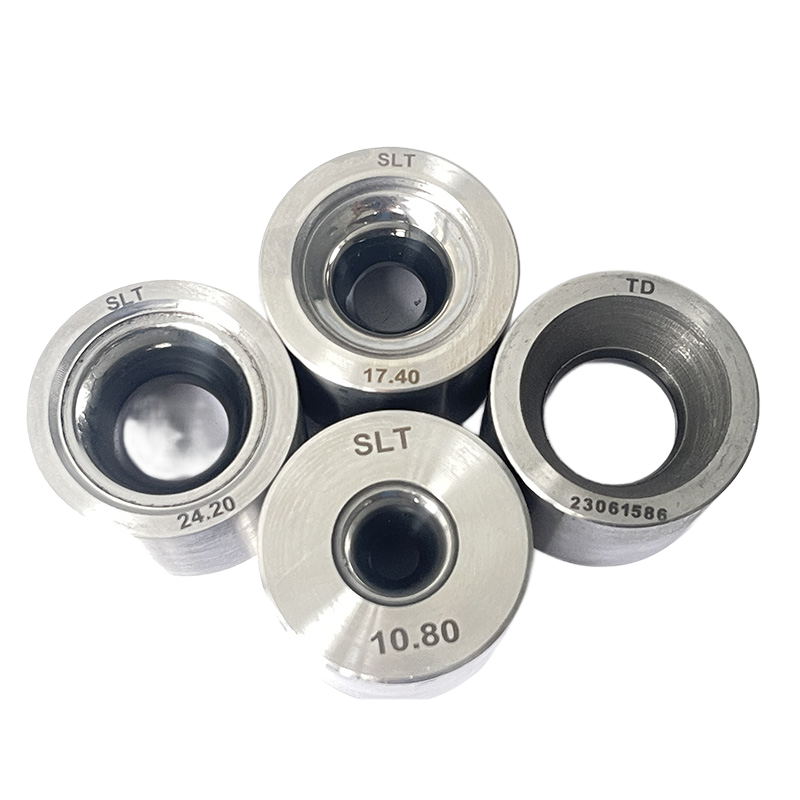TC Wire Drawing Dies: The Essentials You Need to Know
TC Wire Drawing Dies
In the realm of metalworking, precision and efficiency are paramount. TC wire drawing dies, also known as Tungsten Carbide wire drawing dies, stand as a testament to innovation in achieving these goals. This article delves into the core concepts of TC wire drawing dies, explaining their composition, manufacturing process, applications, and significance in the metalworking industry.

What is tc wire drawing dies?
TC wire drawing dies are tools designed to shape and reduce the diameter of metal wires through a drawing process. They are constructed using Tungsten Carbide, a composite of tungsten and carbon. This compound's remarkable properties, including high hardness, wear resistance, and thermal stability, make TC wire drawing dies a staple in various metalworking applications.
Manufacturing Process:
Creating high-quality TC wire drawing dies involves a precise manufacturing process:
1. Material Selection: Tungsten Carbide powder is mixed with a binder material to form a composite suitable for die production.
2. Compaction: The composite is shaped into the desired die profile using high-pressure compaction techniques.
3. Sintering: The compacted material is subjected to high temperatures in a controlled environment, causing it to bond and form a solid structure.
4. Finishing: The sintered product undergoes machining and grinding to achieve the required dimensions and surface finish.
Applications:
TC wire drawing dies find application across diverse industries due to their exceptional properties:
1. Wire Manufacturing: TC wire drawing dies are fundamental in producing wires of various diameters used in applications such as cables, springs, and more.
2. Fasteners and Connectors: They shape wires for bolts, screws, and connectors used in industries like automotive and construction.
3. Electronics: TC dies are employed in creating fine wires used in electronics components like resistors, capacitors, and conductors.
Significance in Metalworking:
The significance of TC wire drawing dies in metalworking is underscored by several factors:
1. Precision: TC dies offer precise control over wire diameter, ensuring consistency in the final product.
2. Durability: The wear resistance of Tungsten Carbide increases die longevity, reducing downtime and maintenance costs.
3. Surface Quality: TC dies enhance surface finish, minimizing defects and improving the wire's appearance and performance.
4. Efficiency: These dies enable efficient material usage by reducing wire diameter incrementally through drawing processes.
Future Prospects:
As technology advances, TC wire drawing dies are likely to witness further innovation. Improvements in Tungsten Carbide compositions, manufacturing techniques, and integration with automation systems will continue to enhance their performance and expand their applications in the evolving metalworking landscape.
In general, TC wire drawing dies, with their Tungsten Carbide composition, precision manufacturing, and exceptional properties, play a pivotal role in shaping the metalworking industry. From wire production to electronics, these dies provide the foundation for various products. As industries continue to evolve, TC wire drawing dies will remain a cornerstone in achieving precision, efficiency, and quality in metalworking processes.
 English
English Español
Español Português
Português русский
русский français
français 日本語
日本語 Deutsch
Deutsch Tiếng Việt
Tiếng Việt Nederlands
Nederlands ไทย
ไทย Polski
Polski 한국어
한국어 Svenska
Svenska magyar
magyar Malay
Malay বাংলা
বাংলা Dansk
Dansk Suomi
Suomi हिन्दी
हिन्दी Pilipino
Pilipino Türk
Türk Gaeilge
Gaeilge عربى
عربى Indonesia
Indonesia norsk
norsk čeština
čeština Ελληνικά
Ελληνικά Українська
Українська नेपाली
नेपाली Burmese
Burmese български
български ລາວ
ລາວ Latine
Latine slovenský
slovenský Lietuvos
Lietuvos

Changzhou Shen Litong Mould invites you to visit the exhibition
From August 27th to 29th, 2025, at SHANGHAI NEW INTERNATIONAL EXPO CENTRE,the 12th China International Wire&Cable Industry Exhibition (Hall E1, G21), Shen Litong Dies sincerely invites you to visit, exchange and offer guidance, and jointly explore new developments in the industry.
Read MoreOptimizing Your Wire Drawing Process: Selecting the Ideal Die Configuration for Material & Application
The wire drawing process is a critical metal forming operation that reduces the cross-section of wire by pulling it through a series of progressively smaller dies.
Read MoreCommon Wire Surface Defects: Causes and Die-Related Solutions
Abrasions or Built-up Edges (BUE): Accumulation of wire material (e.g., copper, aluminum) on the die surface, which then scratches subsequent wire.
Read More